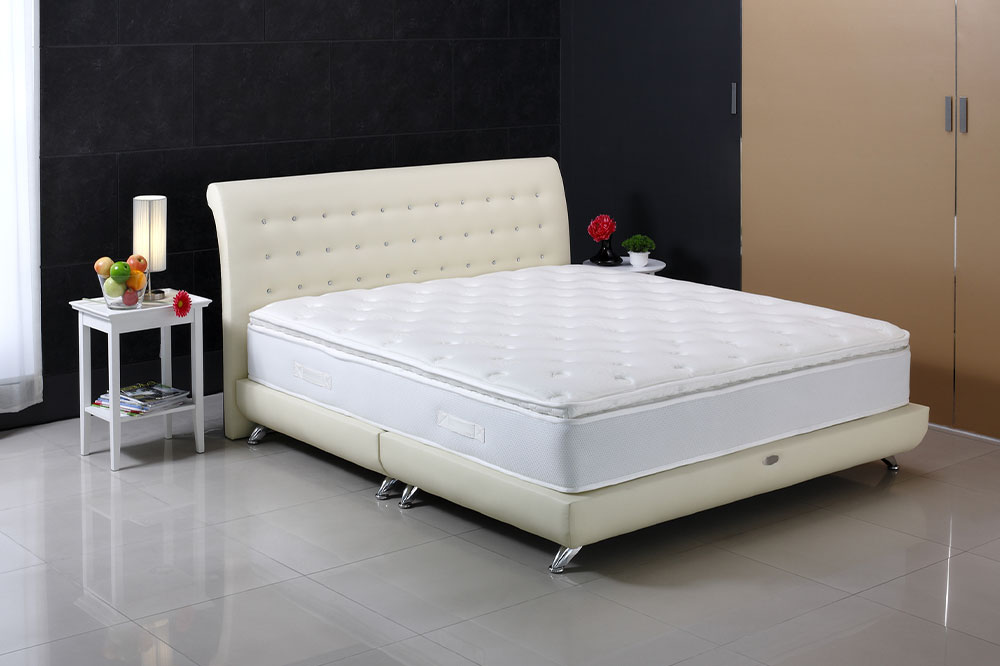Key things to consider before buying a mattress

Good sleep is essential to keep a person energized and healthy. In contrast, poor sleep habits could lead to many health concerns in the long run. Many factors are responsible for poor sleep quality, sometimes, your mattress included. Purchasing the correct mattress that lets you sleep peacefully is challenging since multiple options are available. To help you with your decision, here are some factors and tips to consider while choosing a mattress.
Understanding different mattress types
Knowing the various types of mattresses in the market can help you select and find the right option according to your preferences. Listed below are some of the different types of beds.
- Innerspring- This type of mattress comprises steel springs, making them firmer. They also offer a more bouncy feeling. Stomach and back sleepers may benefit from these mattresses as they offer sturdy support.
- Memory foam- These types provide the best pressure relief. These mattresses are great options for side sleepers or people suffering from back pain.
- Latex- These are similar to memory foam ones but come under the bouncier options. If you are looking for an organic option, these are the best. There are two kinds of Latex mattresses – Dunlop and Talalay.
- Hybrid- These mattresses contain an amalgamation of latex, coils, or memory foam. They provide more support and softness.
- Adjustable- Such mattresses have air chambers that allow you to control their firmness level. These are usually more expensive than the other alternatives.
Firmness
When choosing a bed, the firmness level is a critical factor to consider. It will also depend on your sleep position and body type. There are also various options regarding firmness level – soft, medium-firm, or firm. The various sleep positions are side sleepers, combination sleepers, stomach sleepers, and back sleepers. Meanwhile, the various body types range from heavier bodyweights to lightweight sleepers. The best options for side sleepers are beds with a firmness level of soft or medium. Meanwhile, it is an excellent choice for stomach sleepers to choose firmer beds. It has also been found that too soft or older beds may not properly support the spine. Hence, consider changing your product if you feel uncomfortable.
Size
Before singling out a mattress, ensure it fits your room well. Mattresses are available in different sizes, including Twin, Twin XL, Full, Queen, King, and California King. Because of the ample sleeping space, queen-sized mattresses are the most popular choice among buyers.
Comfort
The most critical factor to consider while choosing the right mattress is comfort. You can buy the most expensive product in the market, but if it is uncomfortable, it will be futile. When considering comfort, there are a few things to remember- mattress types, firmness, body types, and various sleep positions.
Advice from a health expert
If you suffer from conditions like back pain, neck pain, or other bodily discomforts, ask your healthcare provider about the mattress you should use. Those with neck and lower back pain should try to sleep in a neutral position.
Read online reviews
Reading reviews from buyers and customers has also become necessary when choosing a mattress. Reading unbiased and genuine reviews from the people who have purchased the product is always helpful as they would give you a fair and practical idea about your choice. Reviews also help narrow your options to the few best products in the market. You can also ask for recommendations from your friends, relatives, and loved ones. You can also seek suggestions and recommendations on social media.
Popularity of brand
Despite checking customer reviews and ratings and asking for recommendations, you should also check the brand’s reputation and credibility. Look for whether the company makes unrealistic claims about the health benefits of the mattresses and whether it has recalled any product. You could browse for the ratings from the websites of experts. Check if all the relevant information and details concerning the materials used, health benefits, and where the mattress has been manufactured have been provided. You might find this information in the FAQ section on the company’s website.
Warranty
It might be helpful to check for warranties. Most mattress brands offer a warranty. Usually, warranties only provide coverage for some things, but generally, a ten-year warranty is standard. Therefore, it is required to read all the terms and conditions of the warranty and what is covered before buying the bed. However, leaving the mattress on the floor and setting it on the wrong type of frame may void the warranty. Some brands also offer a trial period to determine if the bed suits you. This period could range between a week to 30 days.
Free shipping
There are two options to purchase a mattress – in-store and online. Free shipping options should be checked before confirming the purchase. Usually, most brands and online retailers offer free shipping.
Free returns
Some brands and companies charge a restocking or processing fee. However, usually, most of the brands cover the return cost. It is where checking customer reviews might be helpful, as some people could have faced issues or had complaints when trying to make a return.
Budget
With so many different types of beds available, the prices vary from affordable to expensive. Hence, set your budget and look around for deals and discounts to get the best mattress at the best price.
Though some key factors to remember before purchasing a mattress are listed above, other aspects may arise depending on individual preferences. Researching and exploring well is always recommended before confirming a product, as the mattress you choose plays a significant role in helping you cope with back or neck pain issues. Also, good quality sleep is essential for overall health and well-being, so choose your mattress wisely.

